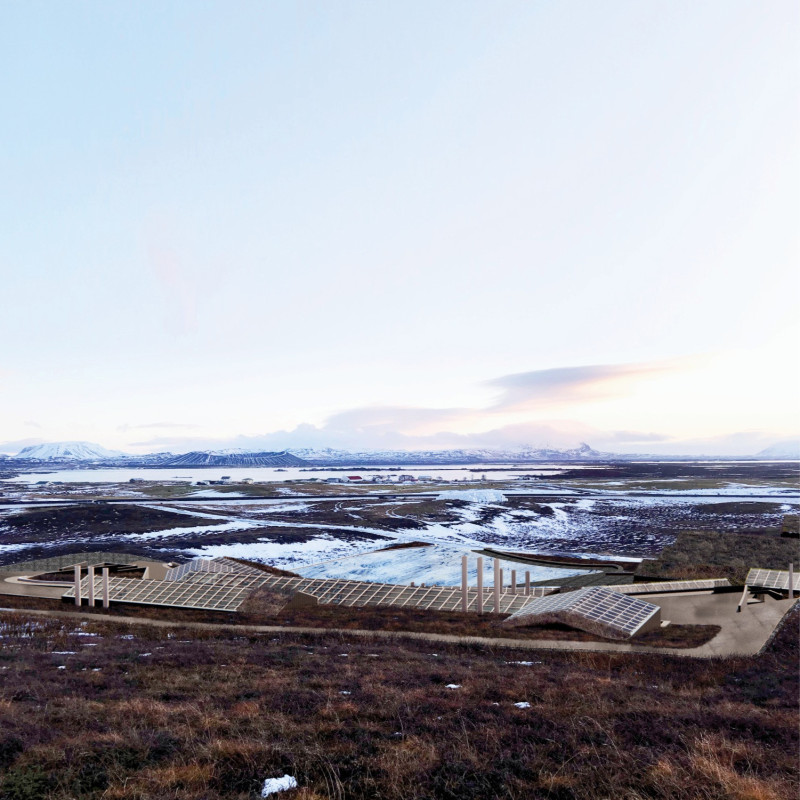5 key facts about this project
The project located in the Myvatn Lake area of Iceland integrates with the region's volcanic and tundra landscape. It addresses the community's need for various services while ensuring the preservation of the natural environment. The design concept focuses on creating a facility that not only supports local social interaction but also reinforces the area's cultural identity.
Site Context and Concept
The design draws inspiration from Iceland's architectural heritage, particularly the turf house, which is emblematic of traditional building practices in the region. The facility encompasses a range of programs including a gym, café, farm, market, indoor climbing area, yoga space, green garden, flea market, and greenhouse. These features are arranged to encourage communication and engagement among community members.
Design Strategies
Efforts to maintain the rural landscape are central to the design. Proposed buildings reflect the height and shape of traditional turf houses, helping them fit into the natural surroundings. The layout has been adapted to follow the existing topography, which minimizes disruption to the landscape and enhances accessibility for users.
Sustainability and Materials
Sustainability plays a key role in how the facility operates, particularly through its greenhouses. These spaces will employ automated ventilation systems and utilize geothermal heating, contributing to overall energy efficiency. The materials selected include volcanic stone for walls and steel corrugated panels for the exteriors, both sourced from the local environment. The greenhouses will feature a glass roof system that uses Low-E glass to reduce heat loss.
Community Engagement
Design elements facilitate access to diverse community activities. A Re-Birth Workshop encourages residents to recycle and repurpose materials, fostering creativity. An auditorium serves as a gathering space to enhance community ties, while the gym doubles as a weekend market, allowing for varied use of the space.
The facility is surrounded by landscaped areas planted with native species, bridging the gap between natural and built environments. This thoughtful integration enhances the surrounding landscape while providing a welcoming atmosphere for visitors and residents alike.






















































